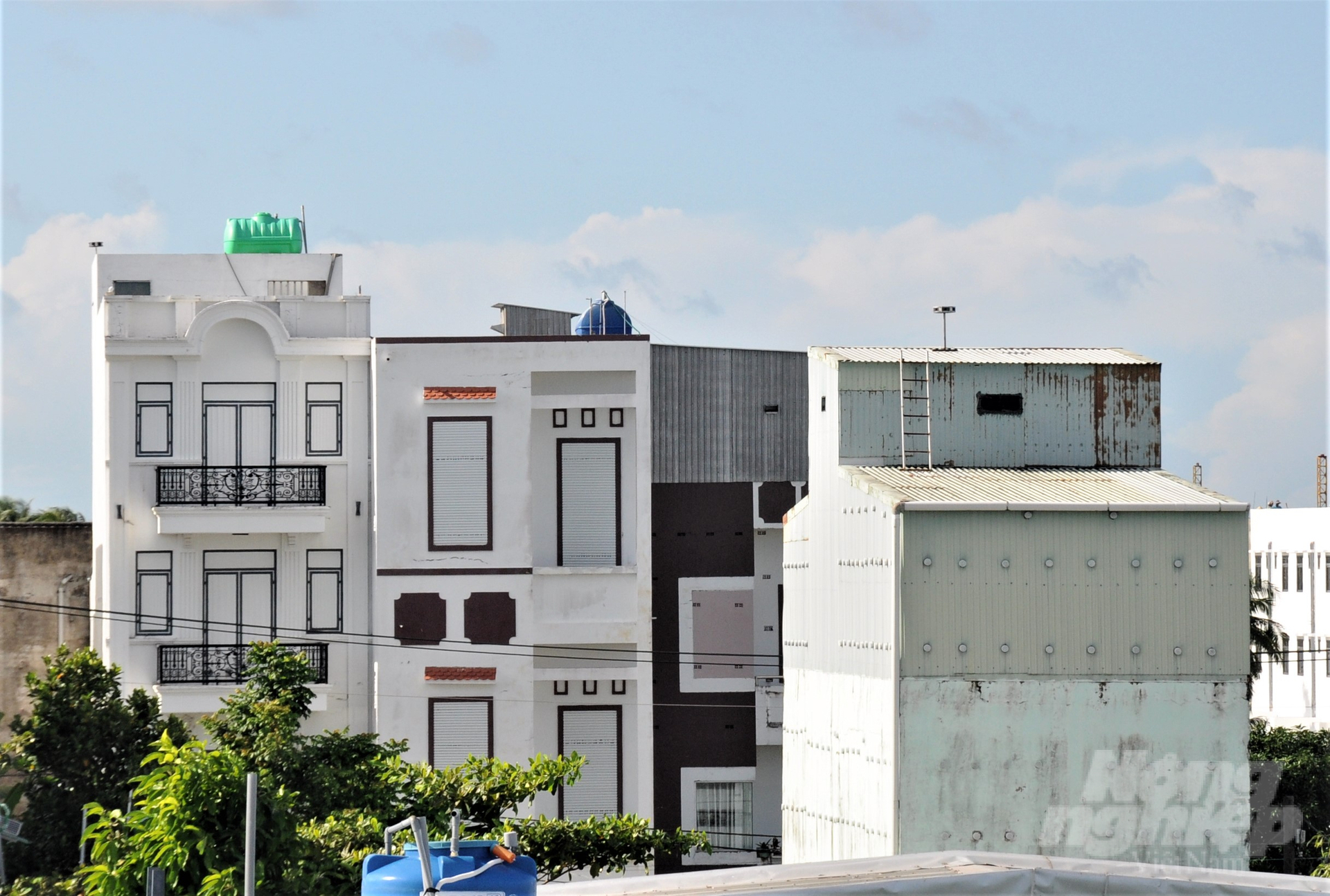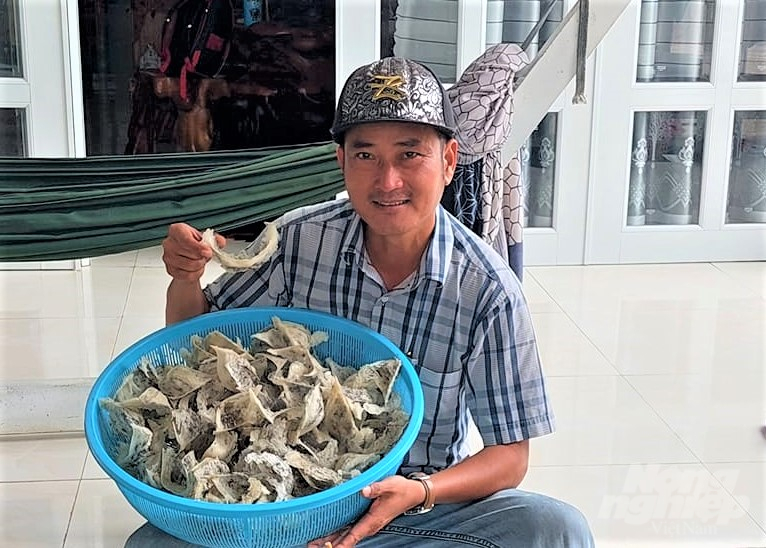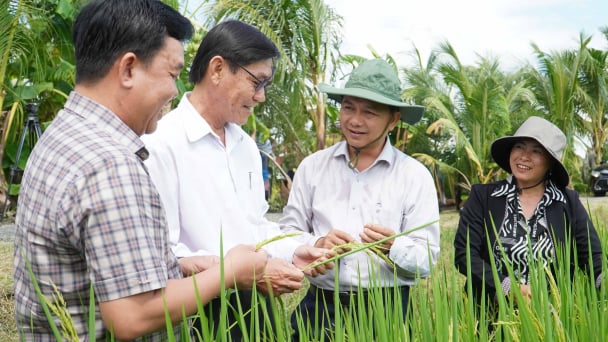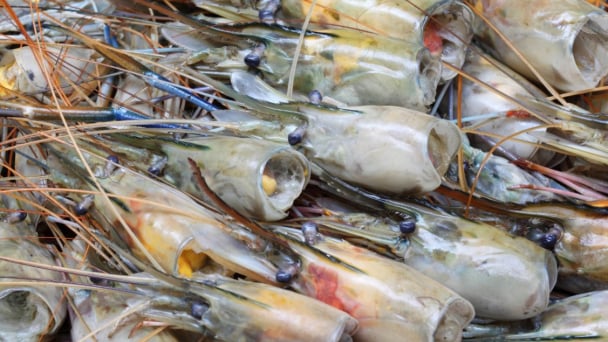June 17, 2025 | 14:38 GMT +7
June 17, 2025 | 14:38 GMT +7
Hotline: 0913.378.918
June 17, 2025 | 14:38 GMT +7
Hotline: 0913.378.918

In An Hoa Residential area, Rach Gia, many households have been renovated and upgraded to raise swiftlets; leading to consequences namely noise and environmental pollution, as well as the great risk of disease spread. Photo: Trung Chanh.
According to statistics from the Sub-Department of Livestock and Veterinary of Kien Giang province, by June 2023, nearly 3,000 swiftlet houses had been completed and put into operation throughout the province. The total floor area of these swiftlet houses in Kien Giang is approximately 730,630 square meters.
These houses are owned by 2,450 households and investment entities. The city of Rach Gia and Hon Dat district are leading in the number of swiftlet houses, but they also experience unregulated expansion and spontaneous construction, not following any planned guidelines.
Compared to a decade ago, the number of swiftlet houses in Kien Giang has multiplied significantly. Specifically, from 2007 to 2013, the province had only 270 households engaged in swiftlet farming, with a total floor area of about 48,000 square meters. However, since 2014, the trend of constructing swiftlet houses in Kien Giang has surged due to the economic success demonstrated by early investors in this sector.
Not only are new and solid structures being built, but many existing residential and urban areas are also being transformed to accommodate swiftlet farming, leading to issues such as noise pollution, environmental contamination, and the potential spread of diseases to humans.
The rapid development of swiftlet farming in the Kien Giang province can be attributed to the natural advantages of a suitable environment, diverse and abundant food sources. Analysis of the swiftlet's digestive system reveals that a significant portion of their diet comprises insects found within the agricultural ecosystem.

Despite the significant increase in the number of swiftlet house in Kien Giang, the yield of harvested bird nests has decreased. This is due to many investors operating inefficiently, often resulting in harvested nests only after 5 to 7 years of construction for most houses. Photo: Trung Chanh.
Recent surveys by relevant authorities have revealed that the number of swiftlet flocks in Kien Giang is showing signs of decline, contrary to the ongoing trend of increasing the number of swiftlet houses.
Several factors contribute to this situation. Firstly, a large number of unregulated swiftlet houses have emerged within the province, growing rapidly without adhering to any planned guidelines, leading to an imbalance in relation to the overall flock count. Secondly, neighboring provinces lacking favorable environmental conditions have also invested in constructing swiftlet houses, resulting in dispersed flocks. Thirdly, the indiscriminate capture of wild birds, particularly through methods like invisible nets and sticky traps, for the purpose of selling them contributes to this imbalance.
According to calculations from experienced swiftlet house investors, a pair of swiftlets in a house can generate an economic value of approximately 600,000 VND per year from nest exploitation, while for wild swiftlets, this value can exceed 2 million VND. Given an average lifespan of around 10 years for swiftlets, the economic value they create translates to 6 -10 million VND per pair, depending on the farming environment.
Hence, the act of capturing swiftlets is not only a violation of wildlife protection laws but also a destructive economic activity. This behavior needs to be condemned and strictly punished to instill deterrence.
Despite Kien Giang having formulated a sustainable livestock development plan for the period 2021 - 2025 and having set targets until 2030, along with Resolution No. 22/2022/NQ-HĐND issued by the Provincial People's Council on August 5, 2022, stipulating areas where livestock farming is prohibited, as well as policies supporting the relocation of livestock farms from such restricted areas and swiftlet farming zones, many unregulated swiftlet houses continue to emerge without thorough control, leading to various economic and environmental repercussions.
The estimated swiftlet nest yield for the first six months of 2023 in Kien Giang is 7,000 kilograms, a decrease of about 1,600 kilograms compared to the same period last year. According to information gathered from local swiftlet farmers and the Kien Giang Swiftlet Farming Association, many swiftlet houses operate inefficiently, with most of them requiring 5 to 7 years or more to generate profits.
Translated by Nguyen Hai Long
/2025/06/12/3721-2-202745_83.jpg)
(VAN) TH made an impression at Seoul Food 2025 with its line of natural beverages, paving the way for Vietnamese food products to enter the South Korean market.

(VAN) Soc Trang's success in rice exports stems from a strategy of developing fragrant and specialty rice cultivation areas and standardizing production toward low-emission practices.
/2025/06/11/1311-5-120811_839.jpg)
(VAN) The pig farming industry is facing the challenge of comprehensive restructuring to meet requirements for quality, safety, traceability, and market expansion both domestically and for export.

(VAN) Vietnam considers participating in ALGROALBA in order to expand agricultural production, coordinate the assessment and effective exploitation potential land.
/2025/06/05/5314-1-184727_407.jpg)
(VAN) From seemingly worthless fish scales and skin, enzymes and lactic ferments can transform by-products into peptides, opening a sustainable, effective business direction and elevating Vietnamese seafood.

(VAN) TTC AgriS and IFC signed a strategic partnership to develop a sustainable agricultural value chain, aiming to achieve the Net Zero target by 2035.

(VAN) Seafood by-products are opening a new path, combining green growth and technological innovation to enhance the industry's value.